Opinion
Kenny Schachter Tries (and Fails) to Keep His Mouth Shut at Gallery Weekend Beijing
In the heart of the Chinese capital's exciting art scene, where speaking truth to power can mean jail time, our columnist walks the line.
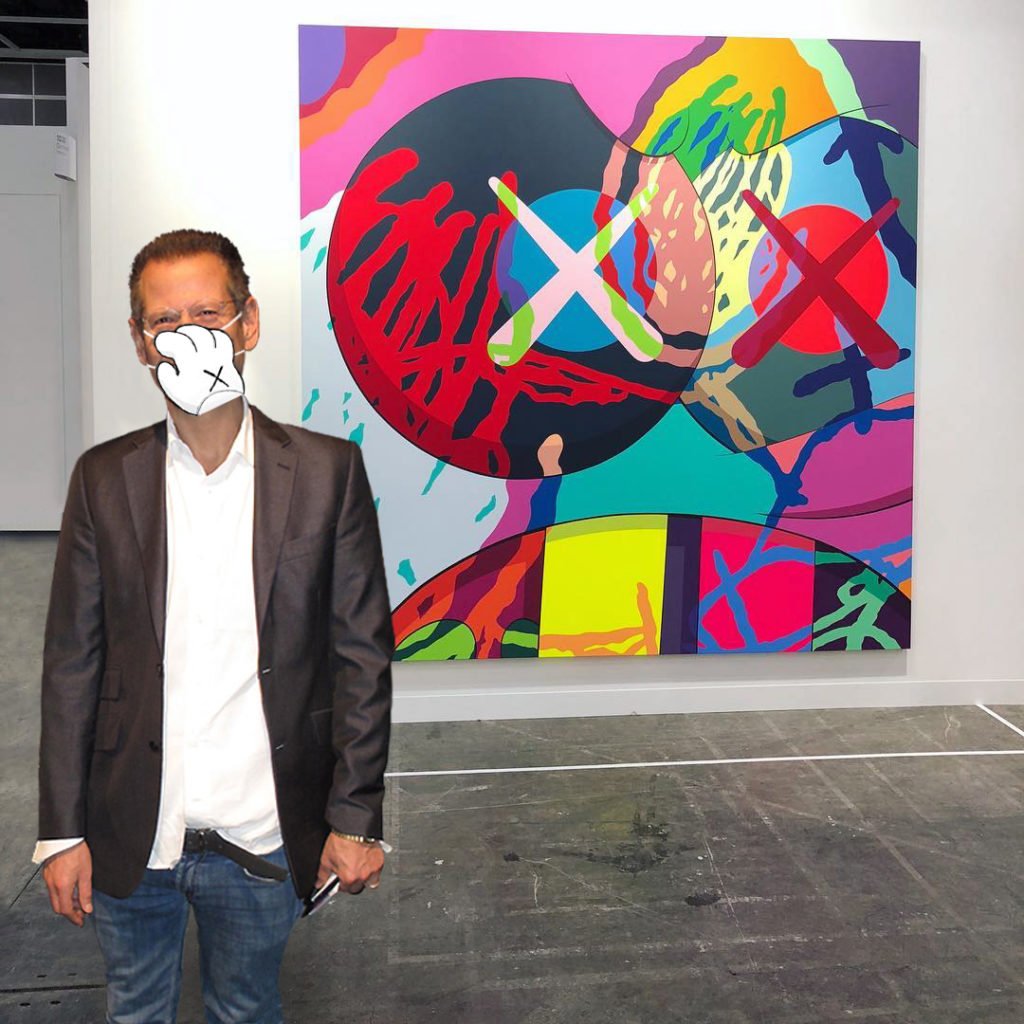
In the heart of the Chinese capital's exciting art scene, where speaking truth to power can mean jail time, our columnist walks the line.

Kenny Schachter

A few months ago, I got a direct message from an Instagram account entitled Frenchiepickles that appeared to be dedicated to a French Bulldog. Odder still than receiving a missive from a pooch—with 42.2k followers, more than three times as many as me!—was that it was actually sent by a Los Angeles-based TV producer affiliated with “Gray’s Anatomy” who was working on a new script for a show about organized crime’s involvement in the contemporary art market.
The pitch for the series, which she hoped I would join as a consultant, was that an errant member of a dynastic art-dealing family had gone into hock to the Corsican mafia to the tune of $1 billion because he had asked the mob to cover his ill-wagered third-party guarantees. “A modern-day ‘Mad Men’ crossed with an international version of ‘The Sopranos,’ creating a vast audience,” was how she spun it. Yeah, right. That I burst out laughing on the conference call may account for the fact I am still sitting by the phone waiting for my big Hollywood break.
Only a few weeks later, I got a call from the BBC’s “Panorama,” the world’s longest-running investigative current-affairs program, asking me to participate in an episode on “endemic money laundering in the art world.” I haven’t been able to live down a flippant comment I made at the 2016 Hay Festival that the art market was a cesspool of corruption (it’s not—okay, maybe a puddle). My intent was more to get a rise out of the sleepy audience than pinpoint rampant crime. When I told the presenter that, in the face of stringent financial compliance regulations that render us all naked before our bankers (both depositing and withdrawing), money laundering through art is far less prevalent than some might think, he was palpably deflated.
The journalist went on to relate a case involving a Ukrainian family that served time for arms and drug smuggling and murder and that also bought and sold a handful of mediocre paintings by artists I had never heard of—he wanted me to speak on camera about the specific works of art for the TV show. Um, thanks, but I have enough mortal enemies as it is. Some of them, in fact, were on hand for Beijing Gallery Weekend and Art Basel Hong Kong, from whence I just returned with plenty of tales worthy of (true) must-watch TV.
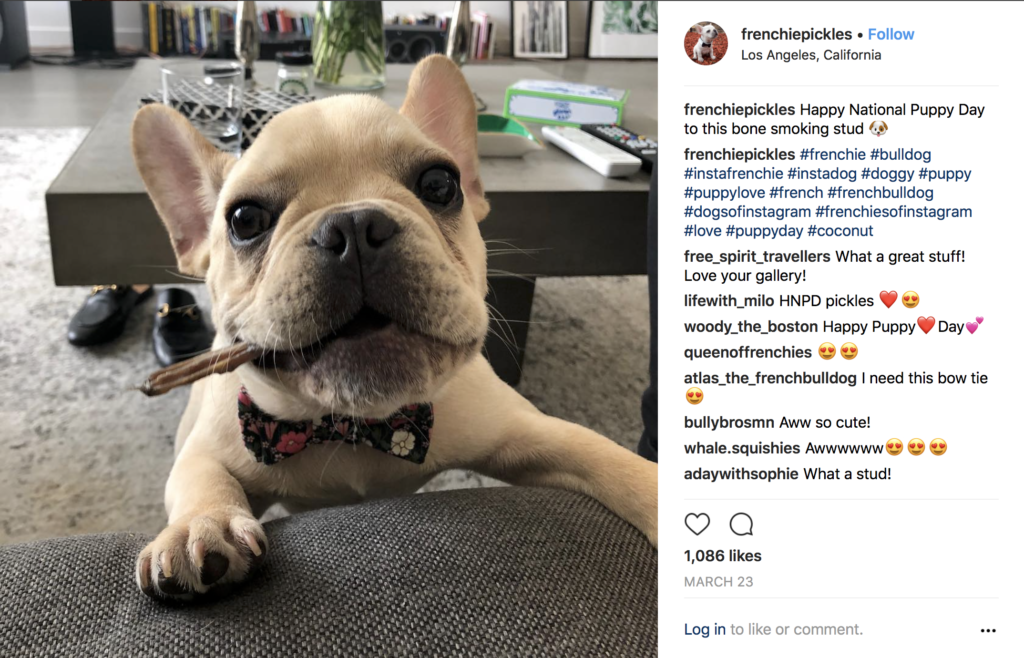
This pup knows talent when he sees it. Image courtesy of Kenny Schachter.
In reality, in such a buoyant global art market, it’s easier to make money rightfully than wrongfully. About the only place where there’s a plausible case to be made for the advantages of money laundering is in mainland China, where controls on the free (out)flow of capital are unduly restrictive—thus explaining the commercial appeal of Hong Kong, where there’s less regulation and far lower taxes. An aside: the dearth of state-run art institutions makes China one of the few places where private museums are imperative, fulfilling a vital role as opposed to the tax-dodging vanity affairs that most Western versions resemble.
Back on the subject of venality, China and Saudi Arabia have more than a few similarities when it comes to recent—and widely reported—crackdowns on alleged wrongdoings by moguls, entrepreneurs, and impresarios. And don’t be fooled by the incongruous locale of the Saudi pop-up prison camp at Riyadh’s luxe Ritz Hotel (where much torturing was said to be meted out), or think the secret Chinese versions are any better. My friend Chinese Deep Pockets stopped short of divulging a story for fear of his life, in contrast to Deep Pockets West, whose concerns run as deep as his wallet.
I know a local Beijing collector who served a chunk of harsh jail time with no charges having ever been filed; he was ultimately released, sans his collection. His father still resides somewhere in prison, though they haven’t been able to speak for a year. They say you can separate the really rich here from the glut of pretenders (and there are plenty) by the duration of their incarceration. Turns out the owner of the Bulgari Hotel where I stayed (don’t ask), one of China’s wealthiest woman, resides in slightly less glamorous accommodations: the slammer.
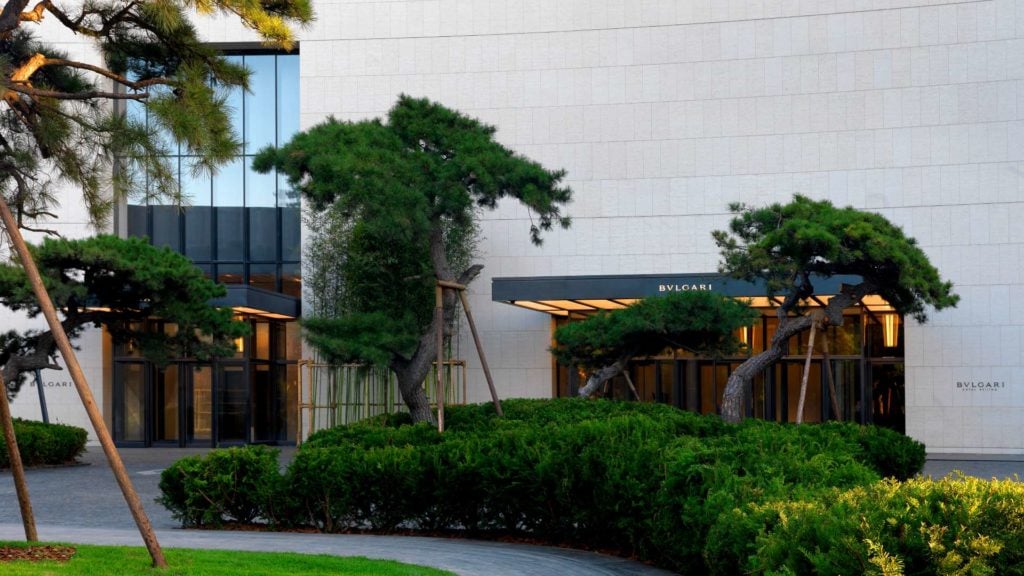
The Bulgari Hotel in Beijing. Courtesy of the Bulgari Hotel.
I can say I’ve been to every Gallery Weekend Beijing (this was the second), comprised of 17 mostly small-to-mid-level galleries—albeit many are housed in gargantuan, seemingly price-no-object spaces, made possible by relatively cheap rents. In an ever-homogenizing world, which includes Hong Kong, Beijing bristles with energy and a voracious cultural appetite. There is a degree of excitement and an air of possibilities—and, speaking of air, the pollution seemed 100 percent clearer than last year, perhaps due to factory closures, or maybe my dumb luck. Shanghai, known as a more money-driven upstart with a European sensibility, staged a series of competing openings and events, feeding an intercity rivalry. I prefer, by a long shot, the grittier and more talent-driven environs of Beijing.
The Gallery Weekend galleries were located in the 798 Art Zone—and all cities that don’t have such a frenetically compressed art district, i.e., London, should follow suit. Like most things in China, it sprang from the military, in this instance through decommissioned factories that began incrementally crossing over into contemporary art studios and galleries around 2000 under the direction of Wang Lanling, the wildly animated chairman of the Sevenstar Science Group (undoubtedly another military supplier). Wang enthusiastically—almost cartoonishly—hosted the dinner for the event at the optimistically titled 798 Auction Center, a spanking-new purpose-built building yet to be occupied by a single auction house.
Gallery weekend appeared to have already become institutionalized from one year to next (welcome to the speed of China). It was attended by Jeffrey Deitch, professional collector Uli Sigg, and LACMA director Michael Govan, who was in town for some museum mergers and acquisitions—a fad pioneered in China last year, when the the Ullens Center for Contemporary Art was purchased by a private equity consortium. Now, LACMA has assumed control of the Yuz, securing a beachhead in the region for the ambitious West Coast museum in the process.
The standout of the weekend—and in Beijing altogether, anytime—was the Long March Space, founded in 2003 by Lu Jie. The gallery is based on the famous tactical masterstroke where Mao, evading certain defeat and death at the hands of Chiang Kai-shek’s Chinese Nationalist army, led his Communist troops on a protracted walk through treacherous topography to escape, emerging as a leading light in the Communist Party. When I queried the brilliant Beijing-based curator Philip Tinari, who has executed his own tactical masterstroke to remain director of the Ullens Museum post-takeover (and who co-organized the Guggenheim’s “Art and China After 1989” show), to explain for idiots like myself why a progressive art gallery would take its name from the military maneuver that set in motion Mao’s bloody rise to power, he (kindly) replied:
“The Long March is to China what Washington’s winter in Valley Forge is to America—the trial that almost kills the movement but in effect makes it stronger. People don’t generally hate Mao, they believe that if he hadn’t come to power China would have been destroyed by colonial aggression. The gallery began in 2002 with a curatorial project that literally traveled the route of the Long March.”
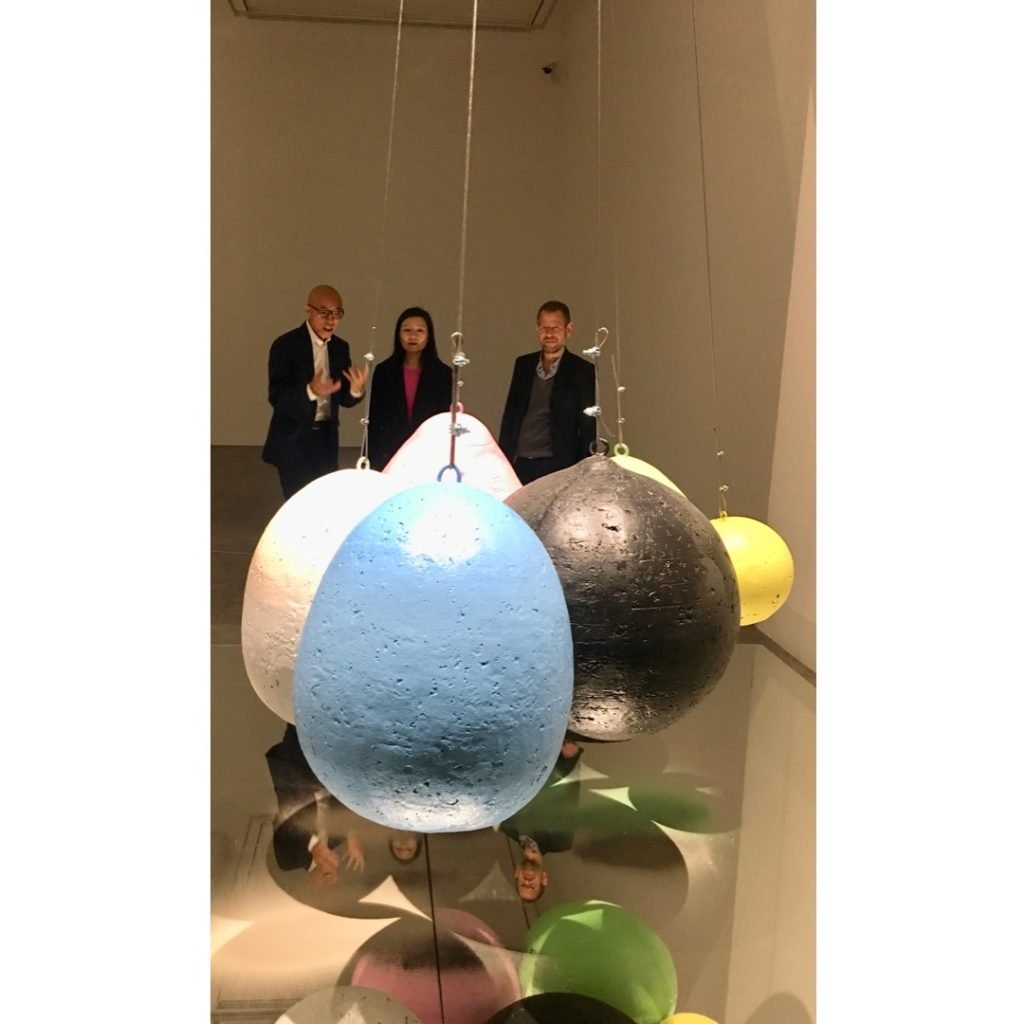
The big balls of Liu Wei at Long March Space. Buyer beware: they are a potential health and safely problem, liable to crash at any minute. Photo courtesy of Kenny Schachter.
That might explain why Lu Jie is so annoyingly thin, still. While I was there, the gallery hosted a massive sculptural installation by artist Liu Wei; though a longtime veteran of the international gallery and biennial circuit with an auction record of nearly $1 million, all of his top prices are from Asian-only sales (and from his paintings). I’m not a fan of his canvases, which bring the big numbers at auction and are like colored static on a broken computer screen, but liked the cement spheres wending their way to and fro while suspended from the ceiling. They seemed to defy gravity, at least until one crashed to the ground during installation (carrying a price tag of $200,000). Sometimes art bites back, with a vengeance. Sure, gallerist Lu Jie probably makes more money on the fair circuit than from his cavernous exhibition space, but you won’t find him whining about the mid-level gallery crisis. Rather he just soldiers on, literally.
Another Beijing mover-and-shaker, Wang Zhongjun, the founder of Huayi Brothers Media (with Wang Zhonglei), recently opened the Song Museum—which, with an admission price of $27, trumps the $25 entry fee of MoMA and Met. In China Daily, Zhongjun justified the hefty price by explaining that his museum is a “serious palace of art” and the (prohibitively) expensive fee ensures people aren’t there for selfies or a quick pee. That and helping to recoup the $62 million he splashed out for his Van Gogh, $43 million for a piece of Chinese calligraphy, and $29 million for a Picasso.
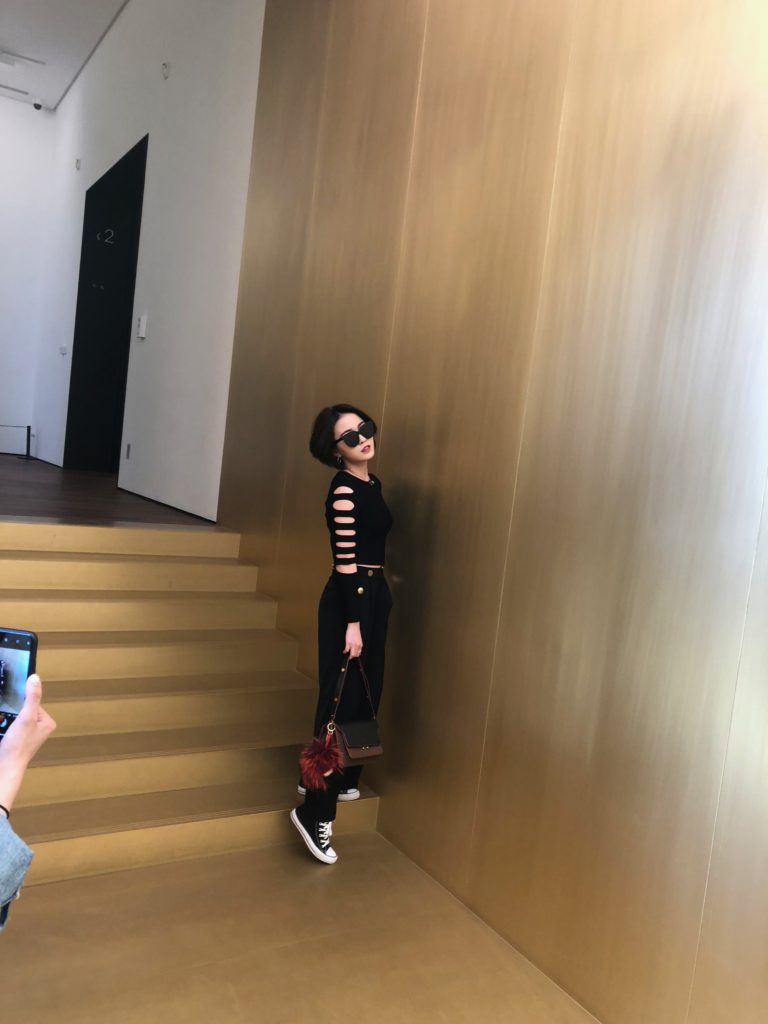
Singing the song of my selfie at the Song Museum. Photo by Kenny Schachter.
Perhaps Zhongjun should rethink his concerns: There were no shortage of visitors dressed to the nines, with entourages in tow, for the sole purpose of documenting their every movement. With no qualms about hamming it up in public, inhibitions having fallen by the wayside, one overzealous patron was all but mashing with the gold-colored walls between the exhibition rooms for her photo opp. I hate sweeping generalizations, but there must be another word to describe the fervent Chinese take on the bellybutton-gazing art form… supersonic selfies?
Hong Kong is the least hospitable pedestrian city I’ve ever visited: The sidewalks are almost entirely cordoned off with metal barricades, leaving very little access and marshaling you around town like penned cattle on the way to slaughter—which, funny enough, was how artist Billy Al Bengston described visiting art fairs (according to Jim Shaw, whom I was lucky enough to dine with after his stellar painting show at Simon Lee Gallery). I entertained circumventing the restrictive sidewalk fortifications (not meant to prevent terrorist acts, merely to control us) by climbing over one, but the thought of falling on my face in front of the lines to gain admittance to the chichi new H Queen Building was too daunting. Hong Kong is a city of lines—you are constantly waiting on one… for restaurants, galleries, taxis, for everything. Ugh.
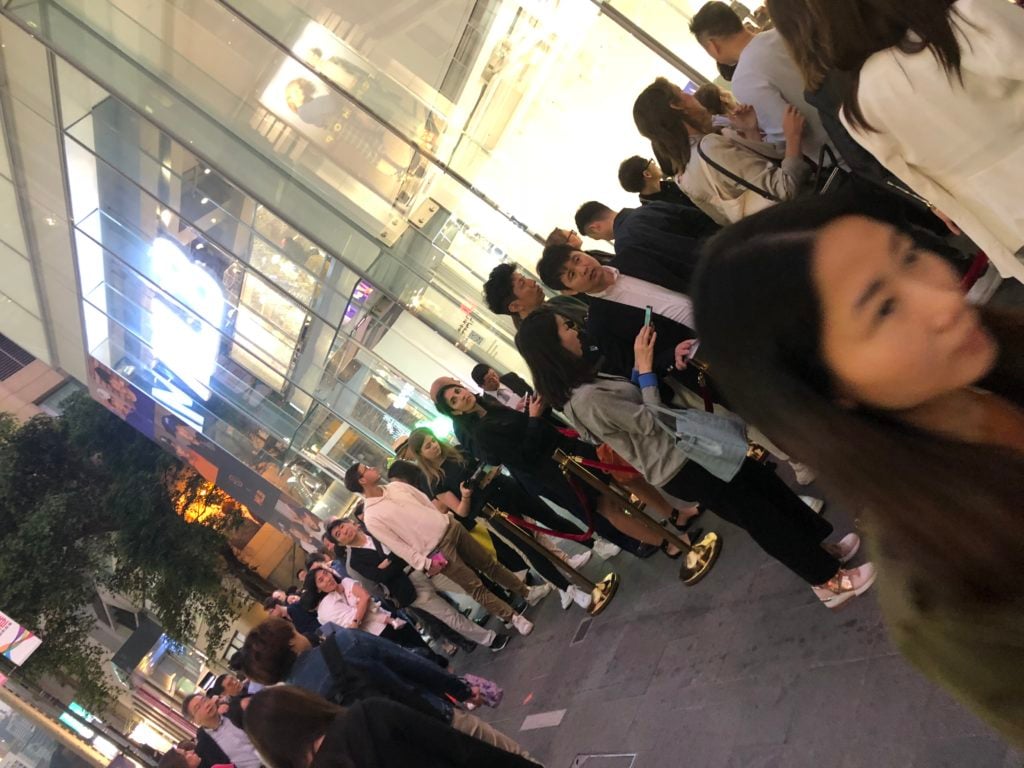
H Queen was as easy to get into on opening night as Studio 54 in its heyday. Photo by Kenny Schachter.
Getting around by car is not much easier: Traffic is too generous a term for what often amounts to stillness (Beijing is much worse, incidentally), and a four-minute wait for an Uber stretches to 20 like toffee. Beijing, meanwhile, pulled the plug on Uber so it’s not even an option. Why? Because. Living in Hong Kong must be like living in Westfield (the world’s largest shopping mall), a Kafkaesque retail hell not unlike SPRING/BREAK Art Show. (I’m playing—I will show at the scary New York fair next year.)
Before I even hit the ground—which is to say the queue—I had invites from Net-a-Porter, Moda Operandi, and even a yoga studio with an art show. It’s amazing to think all these invitations would go out to someone who wears the same Adidas track pants every day. Hong Kong is fast becoming the Art Basel Miami of Asian fairs, the difference being you can get into the events you were invited to. Unannounced, Kai, one of my monsters showed up, to gatecrash the Larry G. dinner for Jen Guidi’s sold out show (which could have flogged five times over). Before I could ask him how he paid for the flight, he volunteered he “stole miles from you and mom.” Can’t argue with ingenuity. Anyway, having him around was like having another set of eyes and ears and more—a chaperone.
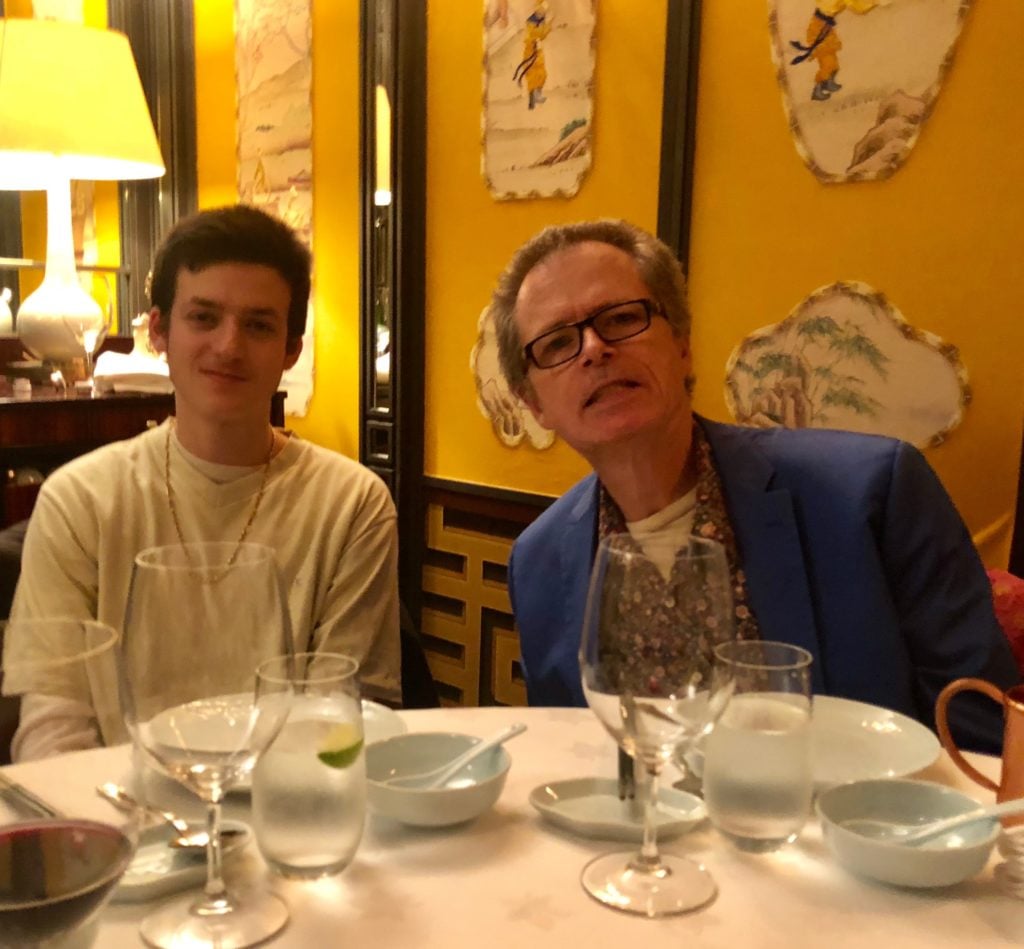
Kai and Jim Shaw and Simon Lee’s China Tang dinner. Photo by Kenny Schachter.
The H Queen Building reminded me of SoHo before the recession of the early 1990s: opulent, ostentatious spaces, yet somehow soulless. It also stirred memories of trying to get past the door at Studio 54 in the late 1970s—since attempting to enter the damn HQ building was a Herculean task. Hauser pulled out the big guns: two floors of recent Mark Bradford paintings. More astonishing than the latest primary-market prices of $2.5 million to $4 million was the fact that if you wanted one, and were deemed “important” enough (the most misused word in art history), you were expected to “buy blind,” meaning you could choose by size but not image. In the past, the gallery instituted the infamous buy two, get one policy, where you had to donate the second work to a museum. Waiting in yet another ubiquitous taxi line, an art advisor told how a client of hers got two Bradfords and conveniently “forgot” to donate the second. Hat’s off.
Stay tuned for part 2, when Kenny leaps into the fray of this year’s Art Basel Hong Kong (and its many after-parties).